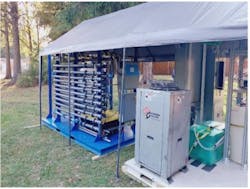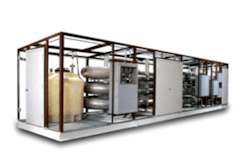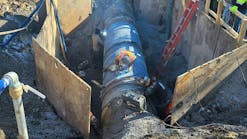Tackling Long Island’s 1,4-Dioxane drinking water problem
Elevated 1,4-Dioxane levels continue to plague municipalities’ drinking water across the country in the continued absence of an enforceable federal drinking water standard
State environmental agencies instead conduct their own investigations into 1,4-Dioxane in drinking water and groundwater. This results in piecemeal regulations and standards that vary from state to state.
For example, Massachusetts has been the most aggressive, setting a 0.3 μg/L (parts per billion) standard. This is followed closely by New Hampshire (at .32 μg/L) and Florida (at .35 μg/L) while Minnesota, Maine, and Connecticut maintain 1,4-Dioxane standards well over 1.0 μg/L as of mid-2022.
The regional regulatory landscape is consistently changing as tens of millions of Americans continue to receive contaminated water due to a lack of affordable, effective 1,4-Dioxane treatment technologies that municipalities can apply to address the problem over the long term.
The Long Island 1,4-Dioxane problem
One of the 1,4-Dioxane drinking water hotbeds in the U.S. is Long Island, New York, where water suppliers in both Nassau and Suffolk counties have reported the highest levels of contamination in the country.
1,4-Dioxane levels in these regional waters can be up to 100 times higher than the EPA’s cancer risk guideline of 0.35 μg/L. Additionally, back in 2017, elevated 1,4-Dioxane was found in 39 Long Island water districts.
This has led to repeated negative media coverage, public pressure, and lawsuits focused around the damages caused by residents drinking water contaminated with the carcinogen. In fact, New York was the first state to develop a drinking water maximum contaminant level (MCL) for 1,4-Dioxane in public water systems now at 1 μg/L.
Long Island’s current 1,4-Dioxane treatment solution
The most common and New York State Department of Health approved approach to treating the critical 1,4-Dioxane situation on the Island has been ultraviolet (UV)-based advanced oxidation process (AOP) technology (UV AOP).
UV AOP breaks chemical bonds of organic chemicals and claims an extremely high oxidation potential capable of destroying 1,4-Dioxane and other organic compounds proven by successful pilot systems beginning back in 2012.
Now, over 10 years later, UV AOP continues to be the 1,4-Dioxane groundwater remediation treatment solution of choice by Long Island water districts and authorities. However, problems have started to emerge creating an increasing need for a more optimal treatment solution.
The challenges with UV AOP treatment systems
After millions of dollars spent on UV-based systems and years of operations and data gathering now complete on Long Island, UV AOP comes with clear drawbacks. The solution:
- Can entail a high capital expense and high ongoing operational costs, especially when elevated iron and/or manganese are involved requiring pre-treatment. Additionally, UV lamp replacement and sleeve cleaning increases maintenance costs and downtime.
- Has high power requirements and peroxide consumption. Generally, UV AOP uses a high hydrogen peroxide dose, since only 10-15% of it is actually utilized. This results in higher hydrogen peroxide costs and higher quenching costs.
- Is very sensitive to UV Transmittance (UVT), which determines power consumption.
- Is sensitive to nitrate interference which can increase power requirements and produce nitrite.
- Can suffer from performance degradation over time which may not be detected until sampling is performed and undertreated water has already been discharged. For example, bulb intensity lessens over time and quartz sleeve optical integrity degrades.
Other AOP technologies
UV AOP is not the only treatment process to deal with 1,4-Dioxane. In addition to activated carbon and ozonation, there are also other advanced oxidation processes.
For example, APT Water’s HiPOx is an AOP technology that has successfully destroyed difficult-to-degrade trace organics on Long Island. A HiPOx system installed at an EPA Superfund Site in Central Long Island is currently responsible for one of the largest daily destructions of 1,4-Dioxane in the world.
The company’s system can utilize either ozone alone or hydrogen peroxide with ozone to destroy organic compounds while minimizing bromate formation. Alternative AOP solutions like these can help to minimize the costs commonly associated with UV AOP.
APT is currently piloting its HiPOx technology in both Nassau and Suffolk counties. Early test results are achieving all 1,4-Dioxane treatment objectives with less cost, energy and waste than UV AOP systems.





